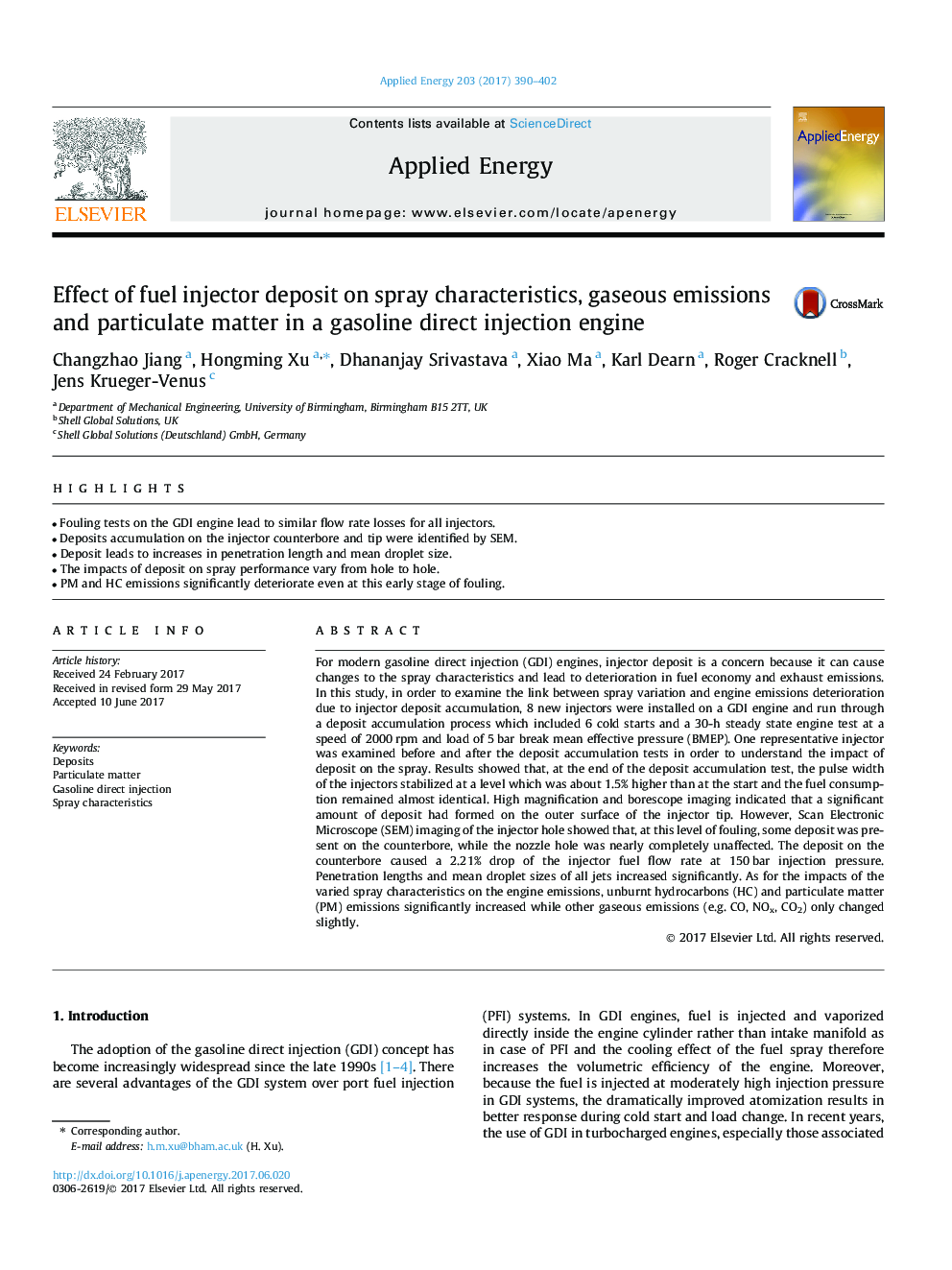| کد مقاله | کد نشریه | سال انتشار | مقاله انگلیسی | نسخه تمام متن |
|---|---|---|---|---|
| 4915777 | 1428087 | 2017 | 13 صفحه PDF | دانلود رایگان |
عنوان انگلیسی مقاله ISI
Effect of fuel injector deposit on spray characteristics, gaseous emissions and particulate matter in a gasoline direct injection engine
ترجمه فارسی عنوان
اثر تزریق انژکتور سوخت بر ویژگی های اسپری، انتشار گازها و ذرات در موتور تزریق مستقیم بنزین
دانلود مقاله + سفارش ترجمه
دانلود مقاله ISI انگلیسی
رایگان برای ایرانیان
کلمات کلیدی
سپرده ها، ذرات جامد، تزریق مستقیم بنزین، ویژگی های اسپری،
موضوعات مرتبط
مهندسی و علوم پایه
مهندسی انرژی
مهندسی انرژی و فناوری های برق
چکیده انگلیسی
For modern gasoline direct injection (GDI) engines, injector deposit is a concern because it can cause changes to the spray characteristics and lead to deterioration in fuel economy and exhaust emissions. In this study, in order to examine the link between spray variation and engine emissions deterioration due to injector deposit accumulation, 8 new injectors were installed on a GDI engine and run through a deposit accumulation process which included 6 cold starts and a 30-h steady state engine test at a speed of 2000Â rpm and load of 5Â bar break mean effective pressure (BMEP). One representative injector was examined before and after the deposit accumulation tests in order to understand the impact of deposit on the spray. Results showed that, at the end of the deposit accumulation test, the pulse width of the injectors stabilized at a level which was about 1.5% higher than at the start and the fuel consumption remained almost identical. High magnification and borescope imaging indicated that a significant amount of deposit had formed on the outer surface of the injector tip. However, Scan Electronic Microscope (SEM) imaging of the injector hole showed that, at this level of fouling, some deposit was present on the counterbore, while the nozzle hole was nearly completely unaffected. The deposit on the counterbore caused a 2.21% drop of the injector fuel flow rate at 150Â bar injection pressure. Penetration lengths and mean droplet sizes of all jets increased significantly. As for the impacts of the varied spray characteristics on the engine emissions, unburnt hydrocarbons (HC) and particulate matter (PM) emissions significantly increased while other gaseous emissions (e.g. CO, NOx, CO2) only changed slightly.
ناشر
Database: Elsevier - ScienceDirect (ساینس دایرکت)
Journal: Applied Energy - Volume 203, 1 October 2017, Pages 390-402
Journal: Applied Energy - Volume 203, 1 October 2017, Pages 390-402
نویسندگان
Changzhao Jiang, Hongming Xu, Dhananjay Srivastava, Xiao Ma, Karl Dearn, Roger Cracknell, Jens Krueger-Venus,
